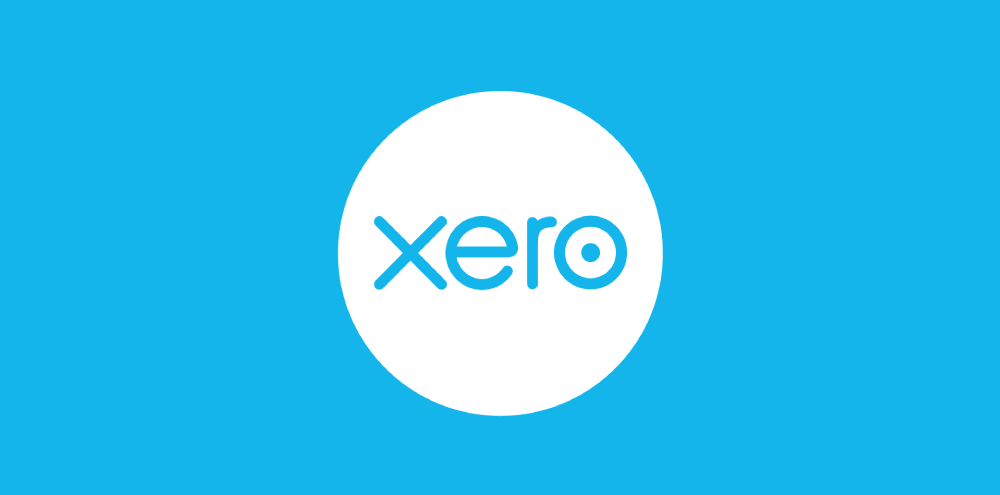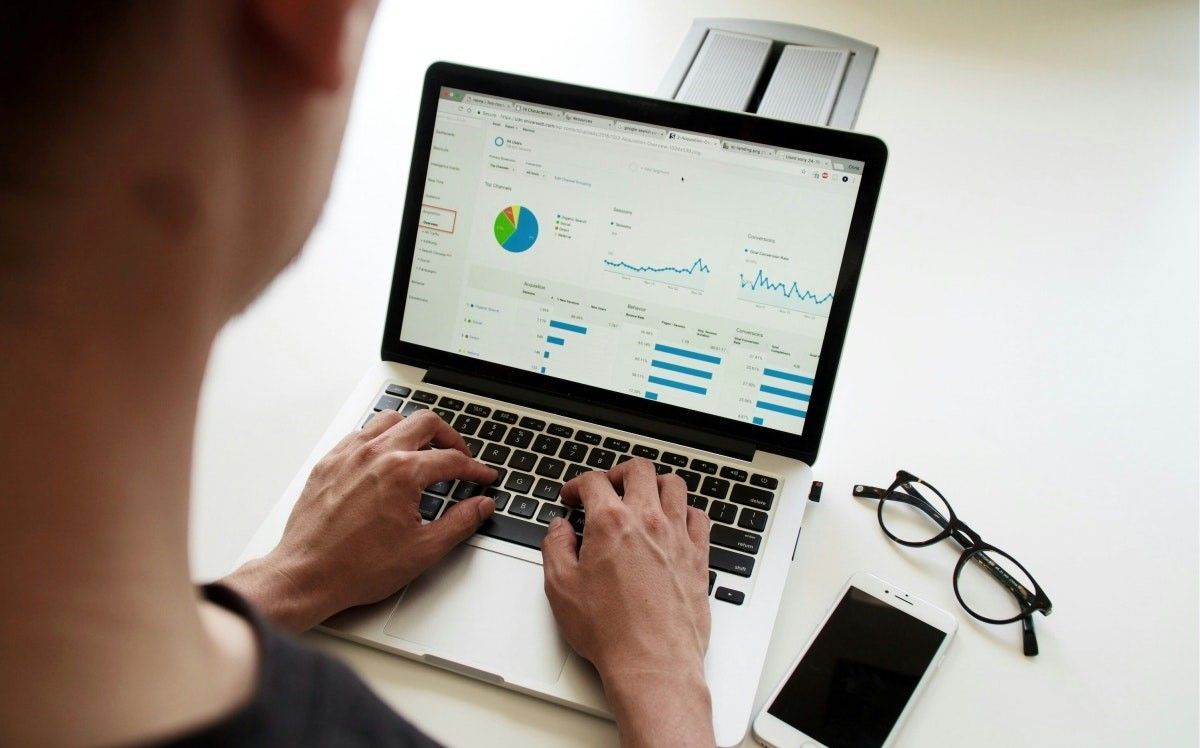The General Ledger - May 2025
May 21, 2025

View our May 2025 General Ledger:
- 2025 Annual Accounts Questionnaires
- Important Notices
- The Fundamentals of a Business Budget
- Xero Tip of the Month: How to Export and Back Up Your Financial Data
- Reminder: KiwiSaver Government Contribution - Are you on track?
- Tax Question of the Month: Case Study - Can This Family Claim the FamilyBoost Tax Credit?
- IRD Upcoming Tax Payment Dates

To grow your business, you need access to additional capital. And one of the traditional routes to business finance has often been the big banks. But with the prudential regulation system making it mandatory for New Zealand banks to keep large cash reserves in place, the banks are tightening their belts and lending less. That’s good for the stability of the bank’s financial governance, but not so good if you’re a Kiwi small business owner that needs extra capital and a solid loan from your bank. The Reserve Bank is holding a consultation on how much capital NZ banks should hold, so lending may ramp up again in the future. However, there is another option. The past few years have seen considerable growth in the ‘alternative lending’ market – with specialist business lenders and online lenders now available. Let’s look at what alternative lending is and the key pros and cons of this kind of finance. What are alternative lenders? Alternative lenders are non-bank financial institutions, like fintechs and online platforms. As an ‘alternative’ to the big banks, they provide quicker, more flexible sources of capital, giving you an agile way to bring extra funding into your business. These non-bank lenders offer diverse products, such as short-term business loans, lines of credit and invoice financing, helping you cover cashflow gaps and support your growth. The pros and cons of using alternative lenders If you’re in urgent need of a cash injection, alternative lending from a non-bank is one option to consider when looking for routes to funding. Let’s examine the pros and cons of accessing finance from a non-bank: Pros of alternative financing: Faster and more flexible lending process: Alternative lenders often have streamlined online applications and less rigid lending criteria. This makes approval and funding generally much faster than traditional banks – a crucial difference when your cashflow needs are urgent. Higher approval rates: Non-banks are generally more willing to lend to businesses that traditional banks have declined. This is good news if you’re an early stage startup or the business has a shorter trading history, lower credit score or fluctuating income. Diverse and tailored products: Alternative lenders offer a wide range of specialised products, such as lines of credit, invoice financing or short-term loans. That’s good news if you want to customise your finance to fit a specific business need. Cons of alternative financing: Higher interest rates and fees: Due to the increased risk they take on, alternative lenders will typically charge higher interest rates and can have additional fees – such as drawdown fees. This may make the total cost of borrowing more expensive than with a traditional bank. Less regulatory protection: Unlike consumer loans, business loans from these lenders may not have the same protections under the Credit Contract and Consumer Finance Act (CCCFA). If the worst happens, this can leave you exposed and with limited protection in place. Risk of personal guarantees: Many alternative lenders require a personal guarantee, meaning that if your business defaults on the loan, you become personally liable for the debt. A personal guarantee puts your personal assets (such as your home) at risk. Talk to us about finding the right finance for your business: A workable financial strategy factors in the need for capital. With sales, revenue and cashflow still challenging, having a route to extra funding is vital. As a firm, we’re not authorised to give you direct financial advice on which banks or alternative lenders to partner with, you’ll need a Financial Advice Partner (FAP) for this. But we can help you understand your cashflow and working capital needs, and help you build a funding strategy that meets the requirements of your broader growth strategy.

Xero has refreshed the ‘New Bill’ button, making it even easier to manage your bills efficiently. This update puts powerful automation tools at your fingertips, helping you speed up bill entry with less manual work. With improved keyboard shortcuts and streamlined navigation, you can enter bills faster and more accurately - freeing up time for more important tasks. This is especially helpful when processing multiple invoices. It’s a small change, but one that can make a noticeable difference to your accounts payable workflow and save valuable admin time.

View our November 2025 General Ledger: - Funding Your Growth: The Pros and Cons of Alternative Lenders - Plan Ahead for January: Manage Your Provisional Tax With TMNZ - Xero Tip of the Month: Speed up Bill Creation With New Shortcuts - Financial Preparations for the Holidays - Tax Question of the Month: Does Expenditure Incurred on Constructing New Shops Qualify for the Investment Boost Regime? - IRD Upcoming Tax Payment Dates https://public2.bomamarketing.com/email/wzrl

Deciding to close your business is a significant step - both financially and personally. Beyond the emotional aspects, there are important legal, financial, and tax responsibilities that must be carefully managed. When done properly, closing a business helps you meet your obligations, avoid penalties, and maintain a clear financial record. As your accountants and business advisors, we’re often the ones helping to manage this process and communicate with relevant parties on your behalf. Below is a step-by-step outline of what’s involved, and who is typically responsible at each stage: 1. Make the Decision with Confidence: Responsibility: Business owner(s) / directors Key Actions: Review your financial position, assess timing, and seek professional advice. It’s important to work closely with your trusted business advisor (that’s us!) so we can help you understand the financial, legal, and tax implications. Together, we’ll explore your options, forecast potential outcomes, and ensure your decision is well-informed and considered. 2. Notify Stakeholders Early: Responsibility: Business owner(s) / management Key Actions: Notify employees, banks, suppliers, landlords, and clients as early as possible. Ensuring staff entitlements are handled correctly and contracts are managed fairly will help prevent complications later. 3. Settle Debts and Manage Liabilities: Responsibility: Business owner(s) and accountant Key Actions: Make sure you pay creditors, chase up any outstanding invoices, and think about any personal guarantees you’ve given. Clearing these up protects both your business and your personal reputation. 4. Dispose of Assets: Responsibility: Business owner(s) with accountant guidance Key Actions: Selling, transferring, or writing off assets (such as inventory, equipment, or property) can have tax consequences. We’ll advise you on the best approach to minimise tax exposure and maximise value. 5. Prepare Final Financial Statements: Responsibility: Accountant / finance team Key Actions: We’ll prepare your final set of accounts to reconcile all transactions, calculate any taxes owing, and ensure everything is accurate and complete. 6. Lodge Final Tax Returns: Responsibility: Accountant / tax agent Key Actions: This includes submitting final income tax, GST, PAYE, and any other required filings. With our support, you can be confident all obligations are met and penalties avoided. 7. Deregister the Business: Responsibility: Business owner(s) with accountant support Key Actions : We’ll guide you through cancelling business registrations, GST, licences, and permits. This is the official step to legally close the business. 8. Retain Records Safely: Responsibility: Business owner(s) Key Actions: Keep financial records for the legally required period (usually seven years) in case of future tax or legal queries. Common Pitfalls to Avoid: Rushing the process without professional guidance Overlooking asset disposal or tax implications Failing to notify all stakeholders Missing lodgment or deregistration requirements We're Here to Help: Closing a business can feel overwhelming, but with careful planning and professional support, it can be managed smoothly and confidently. Our team is here to guide you through every step, ensuring your closure is compliant, clear, and well-managed.

Great news! Xero’s fixed asset section just got an upgrade! You’ll now enjoy a cleaner, more accessible, and responsive interface - making it easier than ever to manage your assets. All the familiar features are still there, and you can now attach files directly to your fixed asset records for improved documentation and tracking. How to Attach a File: Navigate to Fixed Assets: In the Xero accounting menu, select "Fixed assets". Open Asset Details: Click on the asset number to view the asset details. Attach Files: Click the "Attach files" button located on the right hand side of the page. Upload or Drag and Drop: You can either click "Upload files" to select a file from your device or simply drag and drop a file into the upload area. Attachments could be a copy of the bill or a photo of the asset. Save Changes: Click "Save as draft" or "Register" to save the changes. Extra tip: You can also attach files to assets that have already been registered - making it even easier to keep your records accurate and up to date.

View our October 2025 General Ledger: - Closing a Business: A Step-by-Step Guide for Business Owners - Important Notices - Halfway Through the Tax Year - How Is Your Business Tracking? - Xero Tip of the Month: Attach File Now Available in New Fixed Assets - Welcome to the Team: AJ & Zack - Tax Question of the Month: Are Repair Costs for an Inherited Run-Down Rental Property Tax Deductible? - IRD Upcoming Tax Payment Dates https://public2.bomamarketing.com/email/L33b

Making time to look over your financial reports each month is an important task for any business owner. If you are not taking time to do this, either because you’re too busy, or perhaps you don’t really understand what you’re looking at and it doesn’t make sense to you, then here are 6 reasons we recommend you should start to. But before we get our 6 reasons, let’s talk very quickly about which reports to look at. At a bare minimum, and depending on the complexity of your business, you should be looking at the following: The Statement of Financial Performance - also known as the Profit and Loss report (P&L) or the Income Statement – tells you, as the name suggests, how your business is performing over a period of time, such as a month or a financial year. In broad terms it shows the revenue that your business has generated, less the expenses for that same period. In other words, it shows how profitable your business is. The Statement of Financial Position - also known as the Balance Sheet shows the value of the business’s Assets, Liabilities and Equity. Assets include things like money in bank accounts, Plant and Equipment, Accounts Receivable balances Liabilities include things like Bank loans and credit cards, Accounts Payable, and Hire Purchase balances Equity is the difference between your Assets and your Liabilities and includes Retained Earnings and Owner Funds Introduced Accounts Receivable Ageing report (Aged Receivables) - this shows how much money is still owed to the business as at a certain date in time, and is usually segmented as to how overdue they are, or sometimes by how far past the invoice date they are. Generally, you will have Current, 30, 60 and 90 days columns. Accounts Payable Ageing Report (Aged Payables) - this report shows who the business owes money to as at a certain date in time and, like the Accounts Receivable Ageing report, is usually segmented by overdue period. So why bother? Understand your business better - by looking at your Profit and Loss report monthly you will get a good picture of how your business is performing month by month and it gives you a better understanding of what makes up your profit. It can be helpful to compare periods, or to look at a month by month P&L, so you can clearly see on one page the revenue and expenses month by month. This also helps identify trends in your data and many also help to highlight anomalies in coding/categorising or unusual expenses or earnings. Accurate information for lending purposes – If you are applying for a loan or an overdraft, the bank or financial institution will look closely at both your Profit and Loss report and the Balance Sheet as a lot can be learned about a business by looking at these reports together. If you are unsure what some of your balances are in your accounts, get in touch and we can explain them further. Get paid quicker and reduce bad debts – by looking at your Accounts Receivable Aged Summary each month you can follow up with overdue accounts promptly which often results in getting paid quicker. The longer an overdue amount is left unpaid the higher the risk of it not being paid at all, so it is important to keep on top of this. Better relationships with your suppliers – Assuming you are entering your supplier bills into your accounting software (recommended for most businesses to get an accurate profitability figure) your Aged Payables report will alert you to any unpaid or overdue amounts. Supplier relationships are an important aspect of your business and paying on time is crucial to maintaining those relationships. Better cashflow – having an accurate understanding of how much money the business is owed, and how much money the business owes, can help with cashflow planning to ensure that there is enough money when needed. Additionally, understanding the trends of your business, its profitability drivers, its expenses, etc., can help to plan sales and marketing campaigns so that the revenue keeps coming in. Better business decision making – Your financial reports tell the story of your business and it’s important that you understand the story that they are telling you. The better you understand what’s going on in your business the stronger position you will be in to make better business decisions that affect the profitability of your business and its financial viability. If you would like to know which reports are relevant to your business, and you want to better understand what’s going on in your business, give us a call on 04 970 1182 so we can make a time to go through them with you. Your business success is important to us and we are here to help you.

As you may be aware, Xero has been working hard on a refreshed navigation and homepage (formerly known as the dashboard) to deliver a faster, cleaner, and more intuitive experience. The first stage - featuring the brand-new navigation - is set to launch sometime this month (September)! Here are the main updates you’ll spot in the new layout: Dedicated Sales and Purchases sections - no more digging around, everything you need is right where you’d expect it. Reports made simple - key insights are now just one click away, helping you stay on top of your numbers faster. Streamlined settings - settings are now visible across all menus, plus there’s a centralised page to keep everything organised. Smarter right-hand panel - this new hub gives you instant access to JAX (Xero’s new AI business companion), search, help, notifications, and apps - wherever you are in Xero. This revamped system helps you find what you’re looking for faster, move smoothly between tasks, and get even more value from your Xero subscription. The refreshed homepage (previously the dashboard) will launch later this year, bringing customisable widgets to give you quicker, more personalised business insights. We’ll keep you updated on when these changes go live. As Xero Platinum Partners, we’re already up to speed with the new navigation and ready to help you make the most of it. Whether you want a quick run-through, some training for your team, or simply reassurance that everything is where it should be - we’ve got you covered. If you need a hand, give us a call on 04 970 1182.

View our September 2025 General Ledger: View our September 2025 General Ledger: - 6 Powerful Reasons To Watch Your Financial Reports - Important Notices - Xero Tip of the Month: Xero’s New Navigation Refresh Coming Soon! - Audit Shield Insurance - Protect Yourself from a Tax Audit - Welcome to the Team: Breanna & Rachelle - Tax Question of the Month: What Happens to GST on Assets You Bought Before Registering? - IRD Upcoming Tax Payment Dates https://public2.bomamarketing.com/email/znK4




